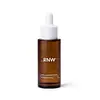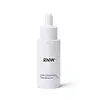What's inside
What's inside
 Key Ingredients
Key Ingredients

 Benefits
Benefits

 Concerns
Concerns

 Ingredients Side-by-side
Ingredients Side-by-side

Water
Skin ConditioningMethylpropanediol
SolventAlcohol
Antimicrobial1,2-Hexanediol
Skin ConditioningGlycerin
Humectant4-Terpineol
MaskingLactoferrin
Skin ConditioningMadecassoside
AntioxidantCentella Asiatica Extract
CleansingAllantoin
Skin ConditioningCeramide NP
Skin ConditioningAlgae Extract
EmollientEclipta Prostrata Leaf Extract
Skin ConditioningFicus Carica Fruit Extract
HumectantSalix Alba Bark Extract
AstringentOriganum Vulgare Leaf Extract
Skin ConditioningChamaecyparis Obtusa Leaf Extract
Skin ConditioningCinnamomum Cassia Bark Extract
MaskingPortulaca Oleracea Extract
Skin ConditioningScutellaria Baicalensis Root Extract
AstringentLactobacillus/Soybean Ferment Extract
Skin ConditioningHydrogenated Lecithin
EmulsifyingCamellia Sinensis Leaf Water
MaskingPolyglyceryl-10 Stearate
Skin ConditioningPolyglyceryl-10 Oleate
Skin ConditioningButylene Glycol
HumectantDipropylene Glycol
HumectantAcrylates/C10-30 Alkyl Acrylate Crosspolymer
Emulsion StabilisingTromethamine
BufferingDisodium EDTA
Fructooligosaccharides
HumectantBeta-Glucan
Skin ConditioningHydrolyzed Hyaluronic Acid
HumectantCarbomer
Emulsion StabilisingPalmitoyl Pentapeptide-4
Skin ConditioningWater, Methylpropanediol, Alcohol, 1,2-Hexanediol, Glycerin, 4-Terpineol, Lactoferrin, Madecassoside, Centella Asiatica Extract, Allantoin, Ceramide NP, Algae Extract, Eclipta Prostrata Leaf Extract, Ficus Carica Fruit Extract, Salix Alba Bark Extract, Origanum Vulgare Leaf Extract, Chamaecyparis Obtusa Leaf Extract, Cinnamomum Cassia Bark Extract, Portulaca Oleracea Extract, Scutellaria Baicalensis Root Extract, Lactobacillus/Soybean Ferment Extract, Hydrogenated Lecithin, Camellia Sinensis Leaf Water, Polyglyceryl-10 Stearate, Polyglyceryl-10 Oleate, Butylene Glycol, Dipropylene Glycol, Acrylates/C10-30 Alkyl Acrylate Crosspolymer, Tromethamine, Disodium EDTA, Fructooligosaccharides, Beta-Glucan, Hydrolyzed Hyaluronic Acid, Carbomer, Palmitoyl Pentapeptide-4
Water
Skin ConditioningMethylpropanediol
SolventGlycerin
HumectantNiacinamide
SmoothingAlcohol
AntimicrobialDipropylene Glycol
Humectant1,2-Hexanediol
Skin ConditioningAscorbyl Glucoside
AntioxidantGlutathione
Tranexamic Acid
AstringentNonapeptide-1
Skin ConditioningEclipta Prostrata Leaf Extract
Skin ConditioningAlgae Extract
EmollientHydrogenated Lecithin
EmulsifyingXanthan Gum
EmulsifyingCarbomer
Emulsion StabilisingAdenosine
Skin ConditioningFructooligosaccharides
HumectantBeta-Glucan
Skin ConditioningButylene Glycol
HumectantTromethamine
BufferingHydrolyzed Hyaluronic Acid
HumectantAcetyl Hexapeptide-8
HumectantCopper Tripeptide-1
Skin ConditioningPalmitoyl Tetrapeptide-7
Skin ConditioningTripeptide-1
Skin ConditioningPalmitoyl Pentapeptide-4
Skin ConditioningPalmitoyl Tripeptide-1
Skin ConditioningHexapeptide-9
Skin ConditioningEthylhexylglycerin
Skin ConditioningCaprylyl Glycol
EmollientWater, Methylpropanediol, Glycerin, Niacinamide, Alcohol, Dipropylene Glycol, 1,2-Hexanediol, Ascorbyl Glucoside, Glutathione, Tranexamic Acid, Nonapeptide-1, Eclipta Prostrata Leaf Extract, Algae Extract, Hydrogenated Lecithin, Xanthan Gum, Carbomer, Adenosine, Fructooligosaccharides, Beta-Glucan, Butylene Glycol, Tromethamine, Hydrolyzed Hyaluronic Acid, Acetyl Hexapeptide-8, Copper Tripeptide-1, Palmitoyl Tetrapeptide-7, Tripeptide-1, Palmitoyl Pentapeptide-4, Palmitoyl Tripeptide-1, Hexapeptide-9, Ethylhexylglycerin, Caprylyl Glycol
 Reviews
Reviews

Ingredients Explained
These ingredients are found in both products.
Ingredients higher up in an ingredient list are typically present in a larger amount.
1,2-Hexanediol is a synthetic liquid and another multi-functional powerhouse.
It is a:
- Humectant, drawing moisture into the skin
- Emollient, helping to soften skin
- Solvent, dispersing and stabilizing formulas
- Preservative booster, enhancing the antimicrobial activity of other preservatives
Alcohol comes in many different forms. Different types of alcohol will have different effects on skin. This ingredient is usually an astringent alcohol.
These alcohols are drying on the skin. They may strip away your skin's natural oils and even damage your skin barrier. Astringent alcohols may also irritate skin.
Other types of astringent alcohols include:
According to the National Rosacea Society based in the US, you should be mindful of products with these alcohols in the top half of ingredients.
Any type of sanitizing product will have high amounts of alcohol to help kill bacteria and viruses.
Fatty alcohols come from plant oils such as coconut oil. These can help hydrate the skin and are non-irritating. Some fatty alcohols include cetyl and stearyl alcohol.
Learn more about AlcoholAlgae Extract is a confusing name. This is because algae is an informal term for a group of 30,000 aquatic organisms that can photosynthesize.
The term 'algae extract' can refer to any one, or a blend of, the 30,000 types.
Algae is rich in antioxidants. Antioxidants help fight free-radicals. Free-radicals are molecules that may damage your skin cells, such as pollution.
Algae can also help with soothing and hydrating skin.
Many different types of algae have different benefits.
Learn more about Algae ExtractBeta-Glucan is a polysaccharide. It can be derived from the cell walls of seaweed, oats, yeast, and fungi. It hydrates the skin and helps boost your skin's natural barrier.
As an antioxidant, beta-glucan helps fight free-radicals. Free-radicals are molecules that may damage your skin cells, such as pollution.
Studies show this ingredient may be an effective wrinkle reducer as it can deeply penetrate into skin. It has also been show to help with wound healing.
Learn more about Beta-GlucanButylene Glycol (or BG) is used within cosmetic products for a few different reasons:
Overall, Butylene Glycol is a safe and well-rounded ingredient that works well with other ingredients.
Though this ingredient works well with most skin types, some people with sensitive skin may experience a reaction such as allergic rashes, closed comedones, or itchiness.
Learn more about Butylene GlycolCarbomer is a polymer of acrylic acid. Its main role is to create a gel consistency.
A high amount of carbomer can cause pilling or balling up of products. Don't worry, most products contain 1% or less of carbomer.
Dipropylene Glycol is a synthetically created humectant, stabilizer, and solvent.
This ingredient helps:
Dipropylene glycol is technically an alcohol, but it belongs to the glycol family (often considered part of the ‘good’ alcohols). This means it is hydrating and gentle on skin unlike drying solvent alcohols like denatured alcohol.
As a masking agent, Dipropylene Glycol can be used to cover the smell of other ingredients. However, it does not have a scent.
Studies show Dipropylene Glycol is considered safe to use in skincare.
Learn more about Dipropylene GlycolEclipta Prostrata Leaf Extract comes from the false daisy plant. False daisy contains antioxidant compounds such as flavonoids.
One study found false daisy to absorb UVA and UVB radiation. However, this should not replace your sunscreen.
False daisy is used in both traditional medicines and foods throughout Southeast Asia and India.
Learn more about Eclipta Prostrata Leaf ExtractFructooligosaccharides is an alternative sweetener. It is often derived from the blue agave plant.
This ingredient is a prebiotic and helps to hydrate the skin. Emerging studies are also showing fructooligosaccharides to have antioxidant properties.
As a humectant, Fructooligosaccharides helps draw moisture to the skin, helping to hydrate the skin.
Bananas, onions, garlic, asparagus, jícama, and leeks also contain fructooligosaccharides.
Learn more about FructooligosaccharidesGlycerin is already naturally found in your skin. It helps moisturize and protect your skin.
A study from 2016 found glycerin to be more effective as a humectant than AHAs and hyaluronic acid.
As a humectant, it helps the skin stay hydrated by pulling moisture to your skin. The low molecular weight of glycerin allows it to pull moisture into the deeper layers of your skin.
Hydrated skin improves your skin barrier; Your skin barrier helps protect against irritants and bacteria.
Glycerin has also been found to have antimicrobial and antiviral properties. Due to these properties, glycerin is often used in wound and burn treatments.
In cosmetics, glycerin is usually derived from plants such as soybean or palm. However, it can also be sourced from animals, such as tallow or animal fat.
This ingredient is organic, colorless, odorless, and non-toxic.
Glycerin is the name for this ingredient in American English. British English uses Glycerol/Glycerine.
Learn more about GlycerinHydrogenated Lecithin is created from the hydrogenation of lecithin (a group of phospholipids). Hydrogenation is a chemical reaction between hydrogen and another element.
This ingredient is an emollient and emulsifier. As an emollient, it helps soften skin by trapping moisture within. As an emulsifier, it prevents oil and water ingredients from separating.
Hydrolyzed Hyaluronic Acid is a form of hyaluronic acid. It is created by the hydrolysis of hyaluronic acid with a high molecular weight. Once created, Hydrolyzed Hyaluronic Acid has a low molecular weight.
Low molecular weight HA has been shown to hydrate and increase elasticity of the skin. Increasing elasticity is also associated with reduction of wrinkle depth.
One study found topical low molecular weight hyaluronic acid may be considered for the treatment of rosacea in the adult population. However, we always recommend speaking with a professional about your skin concerns.
Hyaluronic acids are a humectant. This means they draw moisture from the air. Hyaluronic acids help moisturize, soothe, and protect the skin.
Read more about other common forms of hyaluronic acid:
Learn more about Hydrolyzed Hyaluronic AcidMethylpropanediol is a synthetic solvent and humectant.
As a solvent, it helps dissolve other ingredients, helping to evenly distribute ingredients throughout the product. This ingredient has also been shown to have antimicrobial properties which makes it a preservative booster.
Methylpropanediol is able to add a bit of moisture to the skin. It also helps other ingredients be better absorbed into the skin, such as salicylic acid.
Learn more about MethylpropanediolYou might know this ingredients as Matrixyl, a famous peptide.
Peptides are building blocks for protein. Palmitoyl Pentapeptide-4 consists of five amino acids. These amino acids include: 2 lysines, 2 threonines, and serine
This ingredients tells our body to create more collagen. Collagen is a protein that makes connective tissue. Boosting collagen production leads to a healthier skin barrier. Having a healthy skin barrier means having firm and hydrated skin.
Thus, Matrixyl may help improve the look of wrinkles.
Read more about other common types of peptides here:
Learn more about Palmitoyl Pentapeptide-4Tromethamine helps balance the pH and improve the texture of a product. It is synthetically created.
As an emulsifier, Tromethamine prevents oil and water ingredients from separating. This helps stabilize the product and elongate a product's shelf life. Tromethamine also makes a product thicker.
Tromethamine helps balance the pH level of a product. Normal pH level of skin is slightly acidic (~4.75-5.5). The acidity of our skin is maintained by our glands and skin biome. Being slightly acidic allows our skin to create an "acid mantle". This acid mantle is a thin barrier that protects our skin from bacteria and contaminants.
Oral Tromethanmine is an anti-inflammatory drug but plays the role of masking, adding fragrance, and/or balancing pH in skincare.
1,3-Propanediol, 2-amino-2-(hydroxymethyl)-
Learn more about TromethamineWater. It's the most common cosmetic ingredient of all. You'll usually see it at the top of ingredient lists, meaning that it makes up the largest part of the product.
So why is it so popular? Water most often acts as a solvent - this means that it helps dissolve other ingredients into the formulation.
You'll also recognize water as that liquid we all need to stay alive. If you see this, drink a glass of water. Stay hydrated!
Learn more about Water